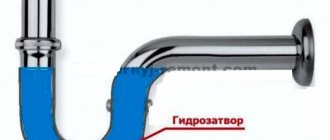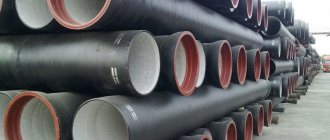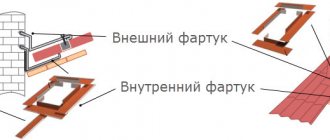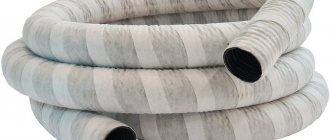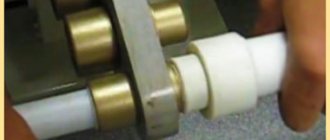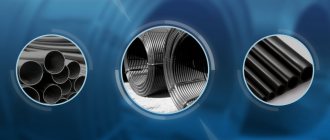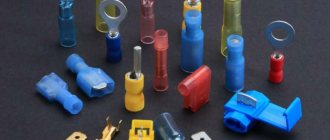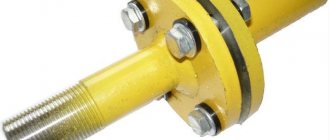Thread sealant is designed to make gas, heating or plumbing pipe connections as tight as possible. When choosing a suitable option, you should take into account all the features of thread sealants, navigate among the whole variety of types, keep in mind both old-fashioned sealing methods and the use of modern anaerobic gels.
Peculiarities
When undertaking a major overhaul, many people think about the tightness of the pipes as the last thing, but in vain. After all, it depends on how high the probability is that everything could be ruined by an unexpectedly occurring leak. This is especially true when pipes run close to expensive equipment: the damage to the family budget will be more than noticeable. However, many find the simplest solutions, using improvised means to seal the thread: tow, threads, plasticine. All this does not provide the necessary insulation. And now it’s time to pay special attention to professional thread sealants.
Professional materials include fum tapes, Teflon threads and anaerobic gels. It is worth dwelling on the latter in more detail. They have recently been used more often than others, as they provide an optimal level of adhesion to pipes, completely sealing the threads. Properly applied anaerobic sealant can withstand pressure of 50 atmospheres, not to mention vibration loads. In general, such a sealant is the best choice for household use, and it will work just as well on professional sites.
The main feature of anaerobic gel is that it begins to harden only when the nut or connection is tightened and the air access to the sealant is blocked. As a result, the connection turns out to be, one might say, monolithic, and practically no mechanical effort can break it. Only ultra-high temperatures help, which can only be achieved using special tools (for example, a hair dryer). It is safe to say that heating pipes can also be sealed using gel, and the durability of the joints will be excellent despite temperature changes.
If you apply anaerobic gel according to all the rules, it will last for 5 years or longer. If the technology has not been properly followed, then the guaranteed service life will be only a year. However, even a one-year warranty is more than you can expect when using unprofessional products and materials. Many people complain that anaerobic binders are too expensive (the average price varies from 1,500 to 2,000 rubles per 50 ml tube), but practice shows that such sealants are worth the money, because repairs if something happens will cost much more. In addition, the gel is economical, and it is quite possible that such a tube will be enough to seal all the plumbing and communication pipes in the apartment.
Thus, we can say with confidence that anaerobic sealants owe their popularity precisely to their characteristics.
Properties and features of sealants
Today on the building materials market you can find a wide range of sealants for different types of pipes, which allows everyone to choose a material that is suitable in an economic and practical sense.
Important! For plumbing systems, installation of sealing materials is considered mandatory.
It is not recommended to use sealant to eliminate a leak, as it can only cope with this problem temporarily. Sealants are used to eliminate leaks in pipeline structures. These materials are installed in places where pipes are connected to each other or joined to fittings.
They are used for various types of fittings, but this is especially true for threaded and compression models. From a structural point of view, such fittings are prone to loosening of the nuts, so they require additional fixation with glue.
The sealing material is not a regular adhesive, so it is not able to deal with a cracked pipe. Such compositions minimize the likelihood of a crack occurring. They are often used for sewer lines. This is due to the fact that modern communications are made from polymers, which are designed for quick installation without the use of special equipment.
Sealants vary in composition and purpose, so you need to be careful when choosing such a product
Kinds
Based on their base, anaerobic sealants are divided into those whose composition is based on an oligomer, and those based on polymers of the acrylic group. Both have similar qualities: they can withstand high pressure, are not subject to the negative influence of mechanical loads, and so on. The difference is important only for professional chemists; construction specialists do not pay attention to this parameter when choosing.
It is much more important to separate sealants according to the degree of fixation. There are options for strong fixation, medium (universal) and low.
Low degree fixing agents are used when it is necessary to seal a small diameter pipe connection. The clamp does not tolerate vibrations and fluctuations, and the pipe itself can be easily untwisted using available tools. This makes the use of low-fix sealant an excellent choice when you need to connect pipes only temporarily, and you plan to dismantle them in the near future. This type can also be used for long-term use, but provided that during operation there will be no significant loads on the threaded connection.
Medium hold pastes and gels are most often used in everyday life. They are suitable for sealing heating systems, gas pipelines, water supply systems, and their use is absolutely harmless and does not change the quality of drinking water. That is why sealants of this type are called universal. They firmly fix the thread, but the joint can be dismantled in the future, only for this it will be necessary to use specialized equipment. The clamp can withstand the loads generated by batteries, water supply pipes and plumbing fixtures.
Strong fixation is not needed at home. Such sealants seal the pipes forever and further dismantling is impossible. They are usually used in industrial production: plants, factories, and in the construction of the city sewer network. These clamps are much more expensive than household ones and require special knowledge and skills when working with them, because you will have to act quickly and accurately. The connection is inextricable and in the future, if necessary, the joint will have to be sawn.
Frequently used medium-fix sealants are also classified. In this case, the classification category is the degree of viscosity of the drug. The smaller and more frequent the threads, the thinner the sealant must be so that it can optimally fill the entire air space of the joint. The maximum diameter of pipes for which anaerobic gels and pastes are produced is 4 cm. Large pipes are sealed in other ways.
Linen thread
Using flax thread is the oldest method of sealing threads.
The only advantage of this product is its low price and constant availability. Even if no other sealants are on sale, flax thread will definitely be available. But the material has a great many disadvantages:
- Difficult to install on threads. If you don't have the skill, you're unlikely to get it right the first time. If a mistake is made during winding, such a joint will quickly unwind, nullifying all your efforts.
- Small operating temperature range. Linen threads practically do not tolerate heat, so they cannot be used to insulate batteries and radiators. They will quickly collapse, leading to leakage.
- Hydrophilicity. Linen thread absorbs moisture well, as a result of which it swells greatly during operation. This may cause the pipe connection to burst. Similar cases are possible when we are talking about pipes made of fragile materials, such as aluminum. However, flax thread is still used to insulate those pipes through which water does not flow.
Teflon or plumber's thread
Teflon or plumbing threads are in many ways similar to flax threads. In the same way, there is a need for correct winding, but this is the only drawback they inherited from their natural “predecessor”.
Teflon threads are impregnated with special compounds that make them universal. They function well both when insulating water pipes, gas pipes and others. Compared to the previous case, the plumbing thread guarantees a good fit and does not fall apart for a long time. It can withstand high temperatures without anything happening to it.
Teflon threads are absolutely safe. They do not release anything into the pipeline, so they are suitable for use on drinking water pipes. However, it is better to clarify this point further.
Some cheap samples are intended purely for technical use.
FUM tape
FUM tape is one of the most popular options, as it is easy to use and has a low cost. All you have to do is wrap a piece of tape around the threads and then tighten the nut or fitting tightly.
However, this is not the main advantage of the tape. It does not affect the thread. If other materials fall apart or stick, then the FUM tape can be easily removed completely by simply unscrewing the thread. At the same time, the tape is completely safe and is excellent for sealing water pipes.
Unfortunately, the tape cannot fix the connection, as they say, tightly. Vibrations or mechanical stress will weaken the joint until a leak inevitably appears. The only means of prevention is to periodically tighten the nuts. Due to this drawback, it should not be used to seal joints on those pipes through which water flows under high pressure.
Non-hardening
This type is relatively new for the Russian consumer. These compounds are produced in the form of a paste, with which you need to thoroughly process the thread, and then simply tighten the nut. It’s also easy to unwind it in the future.
The viscous substance does not glue the pipes together, but simply fills cracks and gaps, preventing water from leaking out. The composition is absolutely harmless to humans, so such sealants can be used in plumbing work.
Do not use sealant paste in cases where the water supply is under high pressure. Then the water will displace the sealant and a leak will form. Unfortunately, there are no means of prevention here, so you will simply have to refuse to use such a remedy, choosing some other, more suitable option.
Hardening
Such substances have high strength characteristics. The fixative sealant takes a long time to dry. Time may vary significantly from manufacturer to manufacturer. However, this is the only drawback of such products.
After applying and tightening this sealant, you must wait the time indicated on the packaging before starting testing and active use. This is especially true when water is supplied under high pressure. It is worth noting that the sealant tolerates prolonged exposure to water under high pressure, since it is almost impossible to displace it after it has dried.
There are products on the market with certain degrees of fixation.
It depends on the degree exactly how, if necessary, you will have to untwist the pipe: simply apply more force or break it.
Anaerobic
Today, anaerobic fixatives are the latest development, quickly gaining recognition. They are suitable for use by both amateurs and craftsmen. Sold in convenient 250 ml tubes and suitable for long-term storage.
The operating principle of anaerobic sealant is as follows. In the open air, it retains a liquid consistency, so it can be easily applied to the thread without fear that it will “set” ahead of time. After the nut is tightened, a chemical process begins, the sealant crystallizes, turning into plastic glue and making the joint completely monolithic. The full reaction time takes no more than 3 hours, after which full operation can begin.
Dismantling is carried out using heat: you need to thoroughly heat the joint, after which you can unscrew the nut.
This method does not work with strong-hold sealants.
Sealing gel
Thread sealants from this category are rarely used in everyday life. Basically, they have found application in the automotive industry, since it is convenient for car enthusiasts to carry sealant in the form of a gel with them, so that, if necessary, they can quickly fix a broken part.
The main purpose of gels is not sealing, but strengthening joints. They make them more durable and resistant to vibration and mechanical stress. This is why many people encounter such difficulties when naively trying to unscrew any bolt on the engine: even at the factory they are treated with a sealing gel.
The only way to deal with a joint treated with such a product is to heat it well.
Otherwise, you may waste your energy without achieving the desired result.
How to apply
Before applying any sealant directly to the required section of the pipe, it should be carefully prepared. Typically, the surface is cleaned of old paint or rust using a brush with metal bristles. It is also recommended to degrease the area with a small amount of gasoline. After this, you can already apply the sealant itself. If silicone tape is used, then it is wound around the threaded connection, and if any liquid sealant is used, then it is applied to the area using a special gun for cylinders
It is important to remember safety and not touch the fresh layer of the composition with unprotected hands, because some may contain acid. To form seams, it is best to use a spatula and work with gloves
Different compositions require different times to dry. After an average of 20 minutes, the silicone sealant begins to harden.
Colors
The most important criterion by which one can immediately draw a conclusion about what the sealant is used for and what properties it has is color. Anaerobic thread sealants are produced in several colors.
Blue
Typically, blue anaerobic sealants are only suitable for metal pipes and parts. The joint turns out to be resistant to all kinds of influences, be it water, gas, antifreeze, gasoline and the like. The blue retainer is a high-quality seal that has only recently begun to be used in domestic conditions. Previously, it was only available in industrial production, for example, in the construction of defense structures, rockets, and spaceships. Application is limited only by the diameter of the pipes: it should not exceed two centimeters. Dismantling can be carried out without special equipment by applying medium mechanical forces.
Red
Red sealants are needed to seal worn, worn out threads. Red sealants are also used to seal joints of ferrous metal pipes. Red fasteners set faster than others, but this does not in any way affect their strength properties. They are resistant to high pressure and temperature changes. The diameter of the pipes that can be sealed with this anaerobic gel is no more than 3 cm. Dismantling will necessarily require heating the joint. When repairing, it is not necessary to remove excess sealant from the threads; you can apply a new layer directly on top of them.
Green
Green sealant is a low-strength variety. It is suitable for temporary connections of both plastic and metal pipes. When dismantling it, no effort will be required: it will be enough to unscrew the connection as usual. Manufacturers claim that the difference between the blue and green options is small, but this is not the case. Blue is resistant to all kinds of influences and vibrations, which cannot be said about green. The green sealant can be used to seal pipes up to 3.81 cm (1.5 inches) in diameter. The important point is that the threads must not be damaged.
Polyurethane
Polyurethane sealants are good for outdoor use. They are not afraid of changes in temperature and humidity, and tolerate ultraviolet radiation well. They can be used on open or closed, but not heated balconies and loggias. Their properties are also in demand in wet areas - bathrooms, toilets and kitchens. The main advantage is that they have very good adhesive ability, for which they are also called adhesive-sealant.
Polyurethane compounds are good for everyone, but have poor adhesion to plastics
Properties and scope
Polyurethane-based sealants can be used outdoors and can be applied at sub-zero temperatures (down to -10°C). And this is their main difference from others. They also have the following qualities:
Elasticity after drying. Water resistance. No shrinkage when drying (no deformation or cracks in the seam, it remains airtight). Adheses well to brick, concrete, stone, glass, metals, wood, etc.). Many compositions can be painted after drying. There are also colorless compositions. The seam is more neat
There are also disadvantages. The first is low adhesion to plastics, which leads to low seam strength. Second, it cannot be used in areas of high temperatures (heating above +120°C is prohibited). Third, it should be applied to dry surfaces (humidity not higher than 10%!) (MISSING). When applying to damp materials, a preliminary primer is required.
Low adhesion to plastics imposes restrictions on the use of polyurethane sealants in the bathroom. They are good for sealing the joint between a steel or cast iron bathtub and a wall, porcelain or glass sink. But you should not use them to install an acrylic bathtub or shower cabin - the seams may leak.
Manufacturers, brands, prices
Compared to acrylic, polyurethane bathroom caulk is a better choice. It remains elastic and does not crack. When compared with silicones, it is definitely difficult to say which is better. The advantage of silicones is that they “stick” well even to plastics, and the advantage of polyurethane compounds is that they are odorless.
| Name | Colors | Special properties | Formation of a surface film | Release form and volume | Price |
| BOSTIK PU 2638 | white, grey, black, brown | high adhesive ability | 45 min | Tube for gun 300 ml | 230 rub. |
| POLYFLEX-LM low modulus | White gray | UV and water resistant, do not use on glass | 15 minutes | Tube for pistol 310 ml | 280 rub. |
| POLYURETHANE 50 FC | white | quick-drying, suitable for bonding plastics, corrosion-resistant steel | 10 min | Tube for pistol 310 ml | 240 rub. |
| MAKROFLEX PA124 | white | resistant to water, weak acid solutions | 25 min | Tube for gun 300 ml | 280 rub. |
| SOUDAFLEX 40 FC | white, gray, black | absorbs and dampens vibration | 15 minutes | Tube for gun 300 ml | 290 rub. |
This type of sealing compounds relates more to general construction ones. Many compositions are ideal for sealing interpanel joints in multi-story buildings and for other similar work. Bathroom sealant is one use.
Purpose of thread sealant
Sealants for threaded connections are constantly being improved, new products with improved characteristics are appearing to ensure high-quality sealing of pipes for a long time. Without sealing around the joints, there is a high risk of leakage, which is why choosing the appropriate sealant is of utmost importance.
Undesirable phenomena cannot be prevented solely by washers and strong tightening. Threads and tapes are often used for sealing; their task is only to seal; they cannot protect against negative influence factors. It is being replaced by modern thread adhesive in the form of gels and anaerobic compounds.
Non-curing sealants
They are produced in the form of thick and viscous pastes consisting of polymers and synthetic resins. This consistency allows them to provide high-quality sealing of connections and calmly withstand vibration loads. Such sealants are often used in combination with other sealants.
Important! Non-hardening sealants cannot be used in high-pressure systems - the composition will simply squeeze out of the thread. They also do not tolerate exposure to aggressive materials well.
Characteristic properties
To work with sealant, you need to know its characteristic features. This will allow you to choose exactly the composition that is suitable in a particular case.
All sealants differ in the following technical features:
- Fluidity or viscosity. For sealing small joints, mixtures in the form of a paste are best suited. When you need to seal a large seam, then you should use a liquid sealant. The greater the width, the thinner the composition. The mixture will flow into all gaps, completely sealing the joint.
- The strength or force required to separate a joint. Maximum fixation sealants cannot be unscrewed, you will only have to break them. A low-strength composition will allow you to do this with little effort. With medium fixation, you can unscrew it using additional tools.
- Temperature, that is, the maximum limit that the composition can withstand without losing its properties. It varies greatly for different sealants. Most compounds can withstand from -50 to +150 degrees. For extremely low and high temperatures, you need to buy a specialized thread sealant.
- Hardening speed. It is usually indicated on the packaging of the sealant. The rate of hardening depends on many factors, including the quality of the composition itself and the conditions under which sealing is carried out. The pipes can be used after this period has expired, otherwise depressurization will occur.
- Scope of use. There are many sealants available, but not all are suitable for water pipes or pipes that carry gas. It is necessary to select a mixture in accordance with the possibility of its use for individual jobs.
Basic requirements for compositions
It is not difficult to choose a sealant for plastic and other water supply pipes. The main thing to consider is that the suitability of a product is determined by the following criteria:
- Compliance with the characteristics and material of pipe production. This is an important factor because a composition suitable for plastic networks is unlikely to be suitable for working with a metal pipeline. There is always information on the packaging container with detailed instructions for use. It specifies which materials this composition can work with and which it cannot.
- Resistance to adverse influences. Sealants for plastic water supply systems must have a high level of resistance to the aggressive influence of the chemical environment.
- Long service life. This is also a very important factor, and the service life of metal, plastic and cast iron networks directly depends on it. With a reliable seal, any system retains its original characteristics for at least five years. And high-quality compounds extend this period to ten years. Although the price in this case will be significantly higher when compared with budget options.
- Elasticity. After hardening, the sealing composition on plastic and other systems must remain plastic. This will make it easier to withstand temperature changes and other factors.
Sealing process
The sealing process can be considered using the example of winding a sealant such as flax. First, the carving is painted. The pipe itself must be carefully prepared before this. It must be cleaned with a steel brush and degreased with gasoline.
After applying the paint, you need to wait a little for the paint to dry slightly, but it will become sticky. The threaded connection is then coated with a small amount of flax. It is better to take strands without large fibers, so the winding will be more uniform.
The flax is wound in thin layers, which are lightly coated with paint. You don’t need to apply a lot of paint; when assembling the pipe, the paint will completely saturate all the flax.
Then they begin to slowly twist the connection. However, there is no need to put in a lot of effort. Also, when squeezed, paint can drip onto the floor, so as not to spoil the coating on the floor, it is better to cover it with old newspapers or a rag.
The use of tow with special impregnation is considered the most simplified solution for designing a water supply network. Many professionals prefer this method. When starting to work with this seal, you need to remember the following recommendations:
- The tow must be soft and must not contain foreign inclusions.
- When working with impregnation, you need to act carefully; traces of it are difficult to remove.
- All visible parts must be carefully removed after working with the sealant.
Advantages and disadvantages
Each type of thread sealing has its pros and cons. Previously, threads and FUM tape were actively used for this purpose, but now they are significantly inferior to modern sealants. And there are many reasons for this.
Benefits of using thread sealant:
- Preservation of properties during temperature fluctuations. Does not affect the quality of sealing.
- Resistance to mechanical influence factors. It will not be possible to unscrew the nut without effort; to do this you will have to make an effort or use additional tools. This is an important condition, because water passing under pressure creates vibrations, which cause gradual unwinding.
- Penetration into hard-to-reach areas. The mixture fills all the cracks, the parts fit tightly to each other, creating complete tightness.
- Ease of use. Anyone can figure out thread sealants. They come with detailed instructions and tips.
- Low consumption. Use sealants sparingly; you only need a small amount of the compound to treat several pipes. For example, one bottle is enough for an average apartment.
But we should also dwell on some of the disadvantages of using sealing compounds. Such a plus as reliable grip turns into a minus when it is necessary to carry out repair work and uncouple the pipes. After using a high-strength sealant, the only way to disconnect is by breaking. Price also matters. The use of sealants will be more expensive than traditional thread sealing options.
Sealants are not suitable when repairs need to be carried out quickly, restoring the operation of pipes as soon as possible. The system can only be used after the mixture has completely hardened. There are not many disadvantages to sealants; they are becoming increasingly popular.
What influences the choice of sealant
Several factors influence the choice and application of sealant:
- The material to be worked with (plastic, metal, metal-plastic).
- Placement of connections. If they are located outdoors, you need to use compounds that can withstand temperature changes.
- Experience. Some sealants require experience to apply and some do not.
To tighten the connecting element, you will need additional tools. With the right sealant, you don’t have to worry about leaks. If a mistake was made, it is better to redo the seal than to suffer in the future.
Application area
Thread sealant is used in many areas of human activity. It is used to seal water pipes in apartments and private houses. But such materials are not suitable for insulating street pipes due to the fact that they have large diameters. Also, sealant for threaded connections of water supply pipes can be used for joints of sewer pipes.
In plumbing, a special plumbing compound is used. Its feature is resistance to temperature changes. This is especially important when connecting a washing machine. But, at the same time, the material should be selected so that it has adhesion to the plastic, otherwise special activators will have to be used.
To seal threads in heating systems, a composition that is resistant to temperature changes is also needed. Gas pipelines should use materials that are resistant to aggressive environments.
Thread sealants are also used in machine tool industry, automotive industry, aviation, water transport, medicine, construction, etc.
Anaerobic sealants
The most convenient and reliable sealants at the moment. Their liquid structure allows them to easily penetrate the narrowest gaps. In air, such a composition does not change its properties, but when it gets into a threaded connection, upon contact with metal and in the absence of air, it sharply changes its properties and crystallizes. The result is a durable plastic that reliably seals the threaded gap. In this case, the excess glue squeezed out after assembling the joint can be used to process the next pipe, and the sealant that gets inside can be easily washed off with water.
Using anaerobic sealants is very simple:
- All surfaces of the threaded connection must be cleaned and degreased. It is enough to wipe new parts with a solvent, old ones - treat them with a special metal brush.
- The solution is applied to several turns of the thread; for convenience, you can use a regular brush.
- The connection is tightened manually, without the use of keys.
- Excess sealant that protrudes from the outside is removed with a napkin. You can use it to seal another connection.
- It will take a couple of hours for the material to harden, after which you can safely use the threaded connection. The manufacturer's recommendations will help you determine the crystallization time more accurately. Do not forget that it increases significantly at low temperatures.
Application
During production, anaerobic sealants are packaged in plastic bottles of varying volumes. The dropper on the bottle allows you to quickly and conveniently apply the sealant to the surface.
Stages of applying glue:
- Degrease the areas to be joined and first remove dirt from them. Dry the surfaces thoroughly before applying glue.
- Shake the bottle well so that the composition inside becomes homogeneous.
- Apply glue to the surfaces to be joined and fix them in the desired position.
- Remove excess product with a rag.
- The composition hardens within 15 minutes.
The curing time depends on the size of the joint, the characteristics of the material and the room temperature. The gluing result will be of the highest quality if the sealant is applied to the entire bonded area of both parts, evenly distributed.
Tip Heat the parts to be glued if the temperature is below +15˚ C to speed up drying. At low room temperatures, the composition hardens slowly.
Even the most modern water pipes have threaded connections, as they also require high-quality sealing.
In the recent past, tightness was achieved using sealing threads, flax strands, and FUM tape.
The anaerobic sealants that replaced them protect metal surfaces from corrosion and provide excellent air and water tightness of threaded connections.
Many companies produce sealants; when choosing an adhesive composition, you should pay attention to some factors:
- what joint strength should be obtained as a result of gluing;
- the conditions under which the joints connected by the composition will be used;
- Will the part need to be disassembled later?
- thread characteristics.
Loctite sealant
The most popular anaerobic sealants on the Russian market are:
- Loctite (Loctite). Liquid compounds and sealing threads are produced under this brand. They are able to prevent gas or liquid leaks, increasing the strength of pipes several times. The cost of sealants from this manufacturer depends on their area of application and composition characteristics. For example, 50 ml of Loctite 577 universal glue costs on average 1,750 rubles, a 50 ml bottle of Loctite 542, used for small carvings, costs 1,784 rubles.
- Santekhmaster is a domestically produced glue from. The composition is resistant to antifreeze, gasoline, alcohol, and does not lose properties at elevated pressure and temperature. The product is used to seal threaded metal and flange connections, it is non-toxic and has no unpleasant odor. Prevents corrosion. A 15 g tube will cost at least 145 rubles.
- Anatherm is used to seal pores and cracks, fix threads when assembling parts and welds. As well as durable and very fast gluing of parts, repair and restoration of components and mechanisms. The cost of a 200 g bottle starts from 2400 rubles.
How to delete
It may be necessary to remove glue from threaded connections immediately after gluing or after the composition has completely hardened. In the latter case, you will need a hair dryer and a wrench.
Sealant removal steps:
- Turn on the hair dryer and direct a hot stream of air to the joint.
- Gradually the adhesive will begin to crumble, then remove the remaining sealant with a rag.
- Disassemble the connection using a wrench.
There is no need to completely remove the remaining adhesive; a new layer of sealant is placed on top of the old one without loss of effectiveness.
Other methods of sealing pipes
There are many other methods of sealing pipes, including some old ones that are still used by people. One of the popular old methods is soaking flax in hot drying oil. Soaking time is usually about two days. After soaking, the flax is kneaded like dough in red lead. This method is suitable for different pipelines (including heating pipes).
It is also worth mentioning sealants for sewer pipes. You can seal a sewer pipe using a very popular method - caulking. For sewer lines, which are connected by means of a special connecting element - a socket, a casing is used. Kabalka is an organic fiber of plant origin, which is impregnated with mineral oil.
This sealant for sewer pipes is very reliable and has a long service life. Embossing is done with a special tool that resembles a large screwdriver. Thanks to this tool, the cable is forced into the joint. Winding is often performed in several turns. After this procedure, the junction of the two pipes is covered with cement mortar to increase sealing performance.
Winding joints with flax is one of the oldest sealing methods
Another old method is to fill the joint with hot sulfur. However, it has been almost completely abandoned, since sulfur vapor is very harmful to human health and can also catch fire.
Manufacturers
You can argue for a long time about which manufacturer is better, so the simplest thing is to turn to reviews. Several brands receive the most positive ratings.
- Loctite. Universal glue from a Chinese manufacturer, however, many users noted that constant care of the cap is required.
- Sealup. Products from Italy are of high quality and easy to use. There is a guarantee seal, which stands out as an advantage, since it is possible to check how hermetically sealed the packaging is.
- Abro. One of the few sealants that can be used at negative temperatures - down to -20 degrees.
- Mannol. This option has one of the longest shelf lives, but it is impossible to work with it in a confined space due to the pungent odor.
- Wurth. This German-made fixative is considered to be of the highest quality. Despite the high cost, it is popular.
- Tangit Uni Lock. Manufacturer from Belarus. Specialized gels are produced for both plastic and metal.
- Siseal. Anaerobic gels of this brand are often used. Sold in containers of 100 g.
In what cases is it necessary to use a sealant? Pros and cons of using
In some cases, a sealing compound may not be needed, however, situations often arise that require its use. Let's look at them:
- violation of installation technology;
- poor quality rubber sealing rings or their complete absence.
Sealing material for sewer pipes is used internally and externally. Experts recommend using sealants as additional protection in all cases. From a financial point of view, this is associated with high costs, however, the reliability of such a system increases, which makes it possible to maximally protect communications from breakdowns.
Let's consider the advantages of using sealing compounds:
- such materials increase the sealing performance of the structure, which has a positive effect on its performance characteristics and service life;
- the possibility of strengthening the areas where the pipes are connected;
- ease of application of sealing materials.
Among the disadvantages of using sealants, only two can be noted:
- increase in financial costs when installing communications;
- time costs.
If necessary, sealing agents are used at the joints of pipeline segments, regardless of the type of connection
